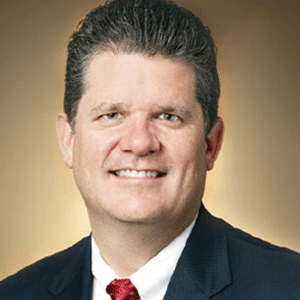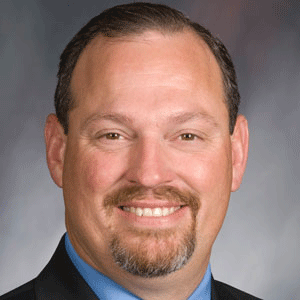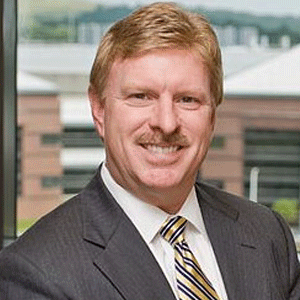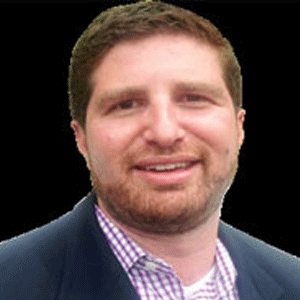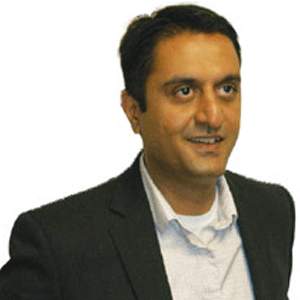THANK YOU FOR SUBSCRIBING

The Internet of Things in Healthcare:Smart Strategies to Deliver Better Value
Miguel Louzan, VP-IT, UCB, Inc.

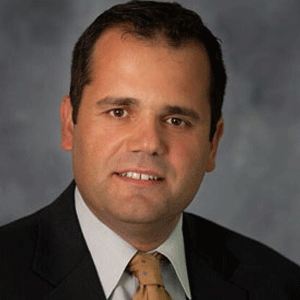
Miguel Louzan, VP-IT, UCB, Inc.
It can be said that we are living in the “Smart Age” of technology. We have smart phones, smart homes, smart TVs and even smart cars. These technologies are everywhere. For many, they’re part of the fabric of everyday life, connecting us to real-time insights and customizable experiences via the Internet of Things (IoT)—an ever-expanding, interconnected ecosystem of devices, machines and sensors that are able to collect and exchange data.
“IoT technologies must be intuitive and nimble enough to provide a user experience that is personalized to the needs and priorities of each patient.”
For all their varied uses, smart technologies share a common goal—to provide a streamlined, personalized experience that is tailored to the needs and preferences of their users. This aim is something pharma and biotechnology companies should keep in mind as they seek to harness IoT tools to improve their patients’ experiences and treatment outcomes.
The healthcare industry as a whole has reached an inflection point, as new reimbursement models necessitate a shift from a volume-based approach to a value-based, solutions-oriented philosophy. For biotech companies, it’s no longer sufficient to simply create an innovative medicine or treatment. We must focus on the entire patient experience, by providing support tools that satisfy the demand for more personalized care, while also upholding the privacy protections laid out in the Health Insurance Portability and Accountability Act (HIPAA).
IoT technologies, such as wearable sensors, mobile apps and—yes—even “smart” pills and medical devices can be part of this solution. These tools have the potential to fill a range of unmet needs, from more reliably tracking patient symptoms, to improving adherence, to helping monitor critically ill patients and predicting when a catastrophic medical event may occur. But finding this sweet spot of value at the intersection of drug development, smart technology and digital health is no easy task. There are several challenges we as an industry must address before we can truly harness the power of the IoT to improve patient care and outcomes.
Data Privacy and Building Patient Trust
The human body generates massive amounts of data—information that wearable sensors and mobile tracking devices can now detect, log and translate into meaningful insights. But where do these data go once they are captured? Who owns them, and how do we make sure they remain secure and private?
Understandably, patients want to know how their information is being used. The glut of health and fitness apps and wearables on the marketplace has given various entities—some of which are not regulated by the same HIPAA laws as pharma—access to health data. We must go above and beyond to assuage patients’ anxieties and uphold our duty to protect their privacy. This means adhering
At the same time, de-identified patient data captured by IoT devices have the potential to provide researchers with new insights that, when combined with existing big data and cognitive computing tools, could help enhance disease understanding and promote more personalized treatment solutions. These insights can help improve clinical trial design, or offer valuable feedback about how certain patient populations interact with our medicines.
When it comes to protecting patient data, our two guiding principles must be honesty and selectivity. By being open and honest with patients about how their data are being used—and how they stand to benefit—we can strengthen our bond of trust. Similarly, being selective about which data we capture—including identifying the end use of data before we capture it—will allow us to leverage these technologies in an ethical way.
Making Big Data Small
We have talked for years about the potential of Big Data in medicine—and rightfully so. Advances in genetics and genomics have fueled the rise of precision medicine techniques, particularly in fields like oncology and cardiology. At UCB, meanwhile, we’re exploring the potential to bring predictive analytics tools into the clinic via an interactive system that can provide real-time insights doctors can use to inform treatment decisions for epilepsy patients.
But for individual patients who want to take a more active role in their health, IoT tools need to be able to make big data small. That is, they need to be able to convert troves of complex information into digestible, bite-size insights that patients can act on.
To that end, we must make sure that the way patients experience and interact with these technologies is customizable based on individual needs. Consider Parkinson’s disease patients, for example. For them, biometric sensors and wearables have the potential to provide valuable insights by passively tracking certain symptoms, such as tremor, rigidity and gait. In fact, UCB has partnered with MC10, a specialty electronics company, on a project that seeks to use wearable biosensors to help those living with Parkinson’s disease.
Still, we know that Parkinson’s disease—like many other chronic conditions—is highly individualized. Each patient has different treatment priorities. One may want to focus his or her treatment on improving gait and ability; another may be more concerned about tracking and addressing non-motor issues like sleep disturbances or hypertension. IoT technologies must be intuitive and nimble enough to provide a user experience that is personalized to the needs and priorities of each patient.
Proving the “Value” of IoT in Healthcare
Every day, it seems a new mobile or digital health gadget hits the market. The incredible pace of innovation in this field is exciting. But as waves of these technologies become available to the public, we must also prepare ourselves to answer a simple question: Do these tools work? How do they drive better value not only for patients, but for the healthcare system as a whole?
For payers, this requires alleviating concerns about the cost and value of wearables and other mobile or digital support tools. We must invest in clinical studies and capture actionable data that highlight the potential of these tools to help patients get the right treatment at the right time, thus reducing long-term healthcare costs.
For providers, we must make sure that these devices are being developed with physicians’needs in mind. In the future, this could mean designing technologies and systems that can seamlessly integrate with existing data, including electronic health records, to generate clear, meaningful insights that doctors can use in the clinic. After all, the goal of wearables and other tracking devices is to maximize and enhance doctor-patient interactions—not replace them.
Above all, the biggest factor that will drive the uptake of IoT technologies in healthcare will be the value these tools can provide to patients. Today’s patients are more informed than ever—they want and expect a personalized approach to care. In the short term, IoT tools can help us better achieve this standard by arming patients and doctors with targeted insights to help provide more effective, agile care. For the long term, the insights gleaned from these technologies can help fuel our shift toward a “smarter” approach to healthcare—one that combines data, digital health and precision medicine with cutting edge therapies to drive better patient outcomes.
Check this out: Top Sleep Disorder Care Solutions CompaniesWeekly Brief
I agree We use cookies on this website to enhance your user experience. By clicking any link on this page you are giving your consent for us to set cookies. More info
Read Also
Elevating Guest Experience with Data
Empowering Educators with Faith, Excellence and Purpose
Leading with AI: From Ethics to Enterprise Impact
Done Today Beats Perfect Tomorrow: The New IT Advantage
The Shift from Cybersecurity to Product Security: A Business Imperative
Advancing Retail through E-Commerce, Cloud and Cybersecurity
Transforming Risk Management into Strategic Business Advantage
Designing Future-Ready, People-Centered Workplaces



